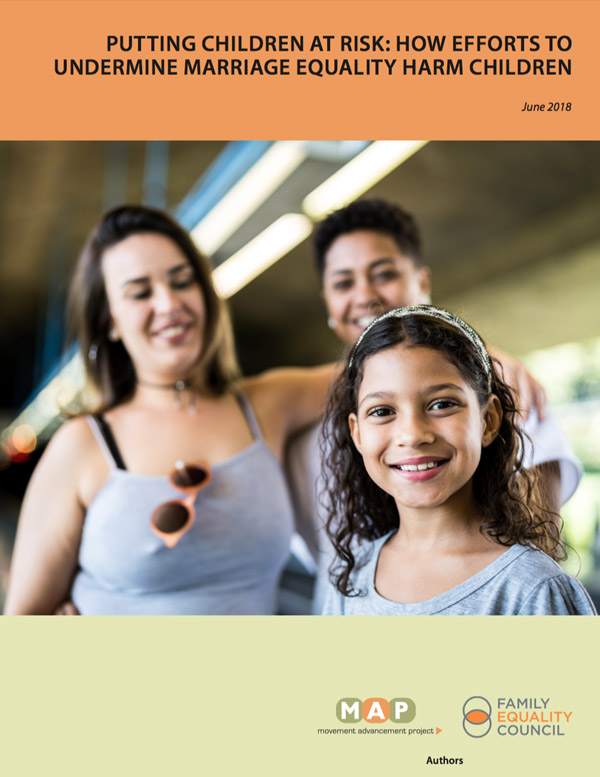The Bottom Line
Putting Children at Risk: How Efforts to Undermine Marriage Equality Harm Children shows how these coordinated efforts pose a profound threat to the children in LGBT families.
First, some government officials, state legislators, and courts have refused to fully recognize the marriages of same-sex couples and their relationship with their children. Second, there is an increase in individuals, businesses, child welfare providers, healthcare providers, government contractors, and even government employees claiming they have a right to discriminate not just against LGBT people, but also against the children of LGBT people, because of their religious beliefs. These license-to-discriminate efforts are reflected in legislation, court cases, and agency guidance around the country.
By refusing to recognize the marriages of same-sex couples, and by attempting to insert religious exemptions into nondiscrimination laws that protect LGBT people, the report concludes that the threats to LGBT families and their children are real and, in states without nondiscrimination laws and in states where legislatures have pushed religious exemption laws, the ultimate result is that children are harmed.
Putting Children at Risk: How Efforts to Undermine Marriage Equality Harm ChildrenDownload GRAPHIC: Putting Children at Risk: How Efforts to Undermine Marriage Equality Harm ChildrenDownload
Recommended citation:
Movement Advancement Project and Family Equality Council. June 2018.
Putting Children at Risk: How Efforts to Undermine Marriage Equality Harm Children.
www.lgbtmap.org/undermining-marriage-harms-kids-report (date of access).


